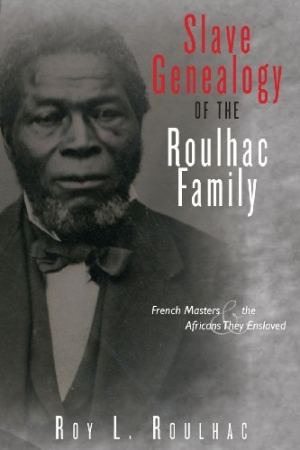Slave Genealogy of the Roulhac Family
French Masters and the Africans They Enslaved
This meticulously researched genealogy of enslaved ancestors reveals their contributions to society from the antebellum period to the present.
Tracing one’s family history is a daunting task filled with triumphs and setbacks, but for blacks interested in finding their ancestry, especially ancestors who lived during the antebellum period, the search can seem impossible, and the results uncovered, implausible. Yet it can be done, as Roy L. Roulhac, a state and federal administrative law judge, shows in this well-researched genealogy.
Roulhac first became interested in his ancestry during his youth after several people pointed out what they perceived as the irony of a black man with a French surname. Roulhac would retort, “My ancestors had been enslaved in Louisiana where the first Africans were brought by the French army.” While combing through deeds, wills, and historical documents, Roulhac finds his great-great-grandparents listed among items for sale in 1858. The author jarringly notes, “My great-great-grandmother Nelly, age forty-six, was valued at $483.33, slightly less than the $500 assigned value of [the slave owner’s] seven mules.”
The book begins in the eighteenth century and traces the journey of three Frenchmen from France to eastern North Carolina where they married into slaveholding families. Adhering to basic principles of genealogy, six chapters are arranged from past to present, beginning with the first brother to emigrate and ending with contemporary members of the Roulhac Family Association. This structure allows the author to show how his family moved from enslavement to ideal US citizens, serving in every war since the Civil War.
Interesting black-and-white photographs from the past (e.g., a portrait of the author’s father in a military uniform) and the present (e.g., a snapshot of descendants of great-great-grandmother Nelly and her husband, Nero) are included throughout the book and tables fill the appendix, yet additional graphics showing how relatives are connected would have added clarity to the lengthy list of descendants.
One of the French émigrés began a memoir Roulhac includes in italics with detailed annotations of his own. Occasionally the book reads like a list of relatives strewn together by a seemingly unconnected piece of information, but most often Roulhac illustrates what life was like for blacks and whites before and after the Civil War. For example, letters reveal white women worried about their daughters’ financial security while research shows many blacks resisted their plight in various ways, including deciding to become expatriates. The book’s attractive cover bears the image of a dignified looking man who (immediately after being declared free) entered into a work contract with his former owner that guaranteed him wages, livestock, and produce.
Roulhac has done an impressive job. The book is a treasure for this family, and it is likely to be a useful resource for genealogists and historians.
Reviewed by
Kaavonia Hinton
Disclosure: This article is not an endorsement, but a review. The publisher of this book provided free copies of the book and paid a small fee to have their book reviewed by a professional reviewer. Foreword Reviews and Clarion Reviews make no guarantee that the publisher will receive a positive review. Foreword Magazine, Inc. is disclosing this in accordance with the Federal Trade Commission’s 16 CFR, Part 255.

